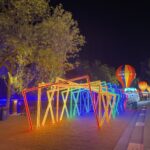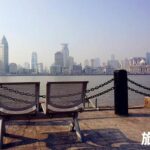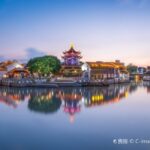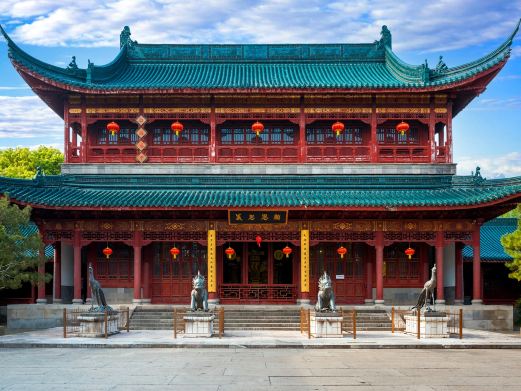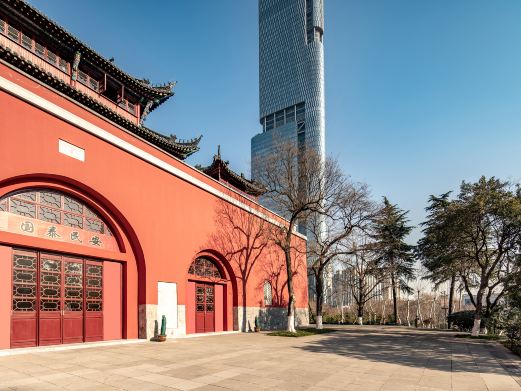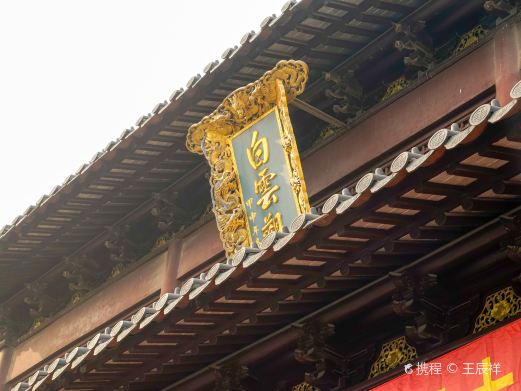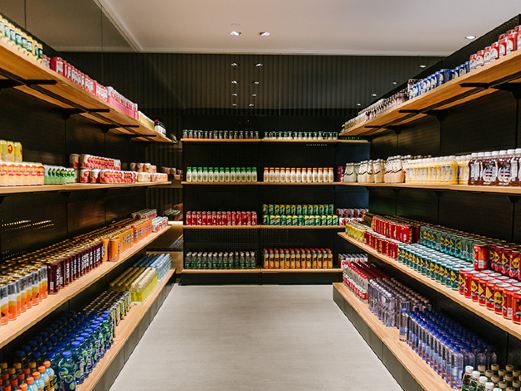Located in the urban area of Jiading, Jiading Confucius Temple was originally built in the twelfth year of the Jiading period during the Southern Song Dynasty (1219 AD). It once served as the site of the ancient Jiading County School and is one of the better-preserved Confucius temples in China today.
The temple is surrounded by lush ancient trees and features antique architecture, where many buildings are ancient relics. A visit here allows one to immerse in the rich Confucian culture and historical atmosphere.

In front of the temple, there are three stone pillar archways. The central one, built in the late Ming Dynasty, is called the ‘Ying Gao’ Pavilion, with ‘Ying Gao’ meaning ‘admiring the height,’ derived from the ‘Analects of Confucius,’ praising Confucius’ profound knowledge. The ‘Xing Xian’ and ‘Yu Cai’ archways on the east and west sides, respectively, were built during the Southern Song and Yuan Dynasties, symbolizing the educational purpose of the Confucius Temple.

In front of the archways, there are 72 stone lions carved on the stone railings, exquisitely crafted. There are also three parallel stone arch bridges.

Built during the Yuan Dynasty, the Lingxing Gate is the first entrance to Jiading Confucius Temple. Inside the gate, there is a semicircular pond called the ‘Pan Pond,’ which was excavated during the Southern Song period.
The Dacheng Gate is the second entrance to the temple. Within the gate, seven bixi (mythical creatures) are seen on the left and right, carrying seven stone tablets on their backs, which mainly record the restoration of the Confucius Temple and the county school, as well as the sacrificial activities during the Yuan, Ming, and Qing Dynasties.
Walking along the stone path surrounded by ancient cypresses leads to the Dacheng Hall, the main structure of the Confucius Temple, originally built during the Southern Song period. The majestic hall is further enhanced by a stone platform in front, showcasing its grandeur.
The hall retains the architectural structure from the Ming Dynasty. Inside, there is a statue of Confucius and instruments used in the sacrificial rites to the sage, including bianqing (a type of chime), guqin (a seven-stringed zither), and shengxiao (a reed instrument). Nowadays, a grand sacrificial ceremony is held in front of the hall on Confucius’ birthday (September 28th).
The temple also includes buildings such as the Minglun Hall, the Stele Corridor, and the Danghu Academy. Minglun Hall was once a place for Confucian scholars to lecture and gather and is now an exhibition hall of the Chinese Imperial Examination Museum, displaying materials on the imperial examinations throughout Chinese history, including examination papers of top scholars.
The Danghu Academy now houses a replica of the examination hall, with wax figures vividly depicting the scenes of ancient examinations.
The Stele Corridor on the west side of Minglun Hall displays calligraphic steles from various dynasties, including the particularly precious inscriptions by Huang Tingjian of the Song Dynasty, Shen Zhou, Wen Zhengming, and Dong Qichang of the Ming Dynasty.
Additionally, Huilongtan Park is adjacent to Jiading Confucius Temple, and nearby attractions such as Qiuxia Garden, Jiading Museum, and Fahua Pagoda are also worth visiting and are all accessible by foot. The temple is open year-round from Tuesday to Sunday from 08:30 to 17:00; it is closed on Mondays.
